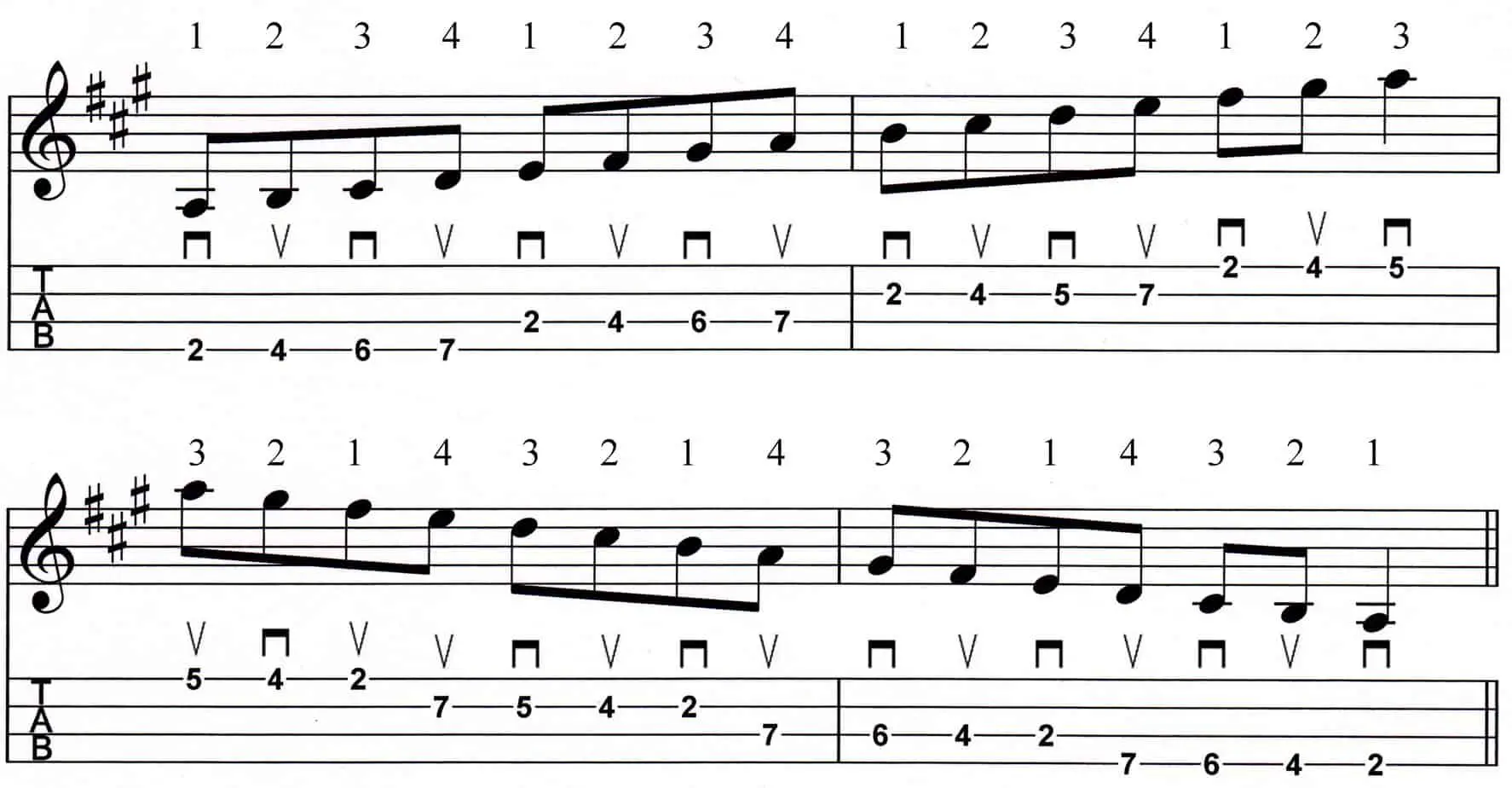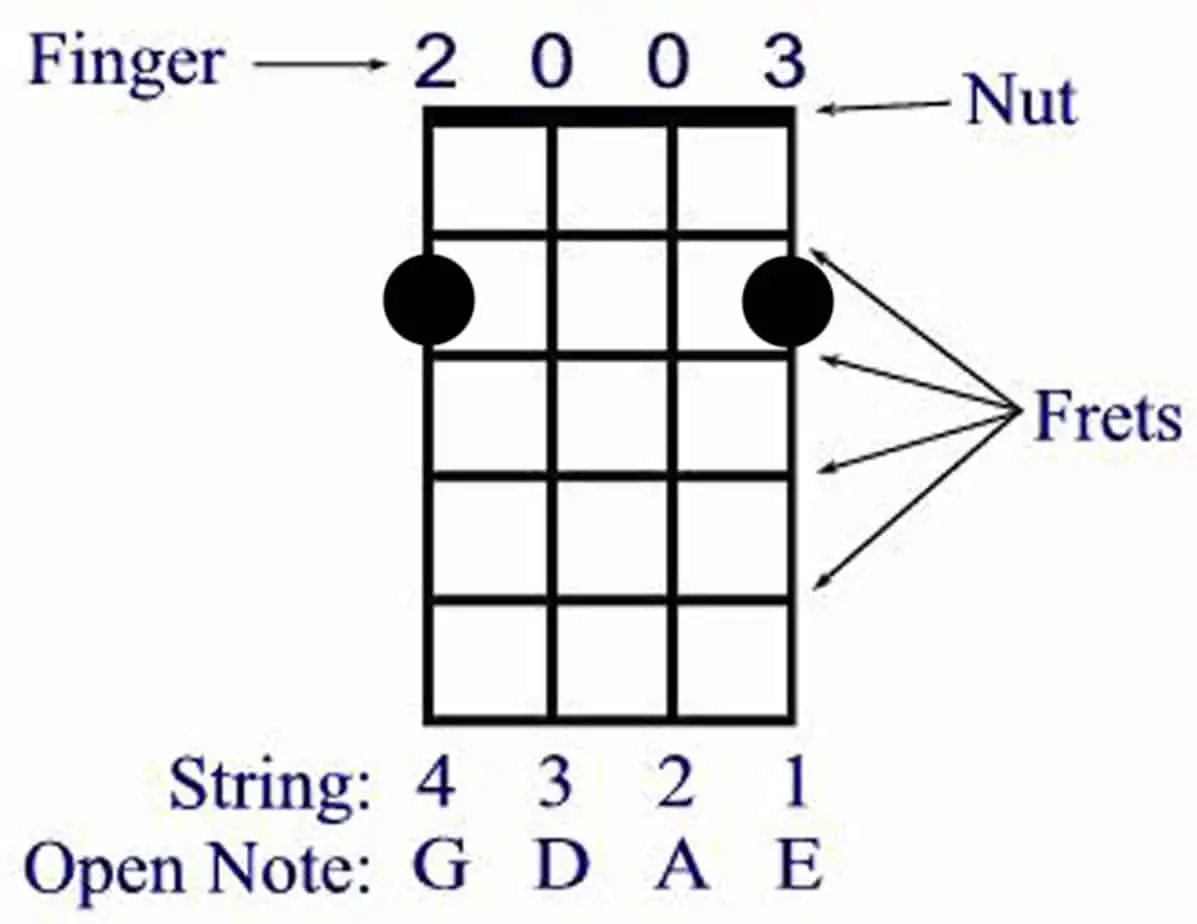As a mandolin player, I’m always looking for ways to make my playing more interesting and engaging. One way to do so is to learn how to play mandolin scales. Scales are the building blocks of music, and learning them can open up a new world of musical possibilities. In this article, I’ll explain how to play mandolin scales and unlock the secrets of the fretboard. With this knowledge, you’ll be able to create more interesting music and take your playing to the next level.
What is a Mandolin?
A mandolin is a stringed musical instrument in the lute family. It has eight strings, typically tuned in courses of two strings each: G, D, A, E. Mandolins are traditionally built with a shallow, round body with a flat back, and a neck that extends from the body at an angle. The strings are plucked with a plectrum or a pick, and the instrument is played in a variety of styles, including classical, folk, jazz, and bluegrass.
The mandolin is a versatile instrument, capable of producing a wide range of tones. It can be used to play chords, melodies, and single-note lines, and is capable of producing a wide range of musical sounds. Mandolins are often used in folk, bluegrass, and country music, and can be heard in many popular songs.
Mandolins come in a variety of shapes and sizes, including round-back, oval-back, and flat-backed models. Some mandolins have a single soundhole, while others have two or three soundholes. The most common type of mandolin is the A-style, which is shaped like an A with a rounded body and a flat top. Other types of mandolins include the F-style, which has a violin-shaped body and a pointed top, and the C-style, which has a round back and a flat top.
What are Mandolin Scales?
Mandolin scales are the basic building blocks of melodies that can be played on the mandolin. They are a collection of notes arranged in an ascending or descending order and are used to create melodies and improvisation. Scales can be divided into two categories: Major and Minor.
Major Scales
- The Major Scale consists of seven notes, with a distinct interval between each note.
- The most common Major Scale is the Ionian Scale, which is the first mode of the Major Scale.
- The Ionian Scale consists of the following notes: C, D, E, F, G, A, B.
- Other Major Scales include the Dorian, Mixolydian, Lydian, and Phrygian Scales.
Minor Scales
- The Minor Scale consists of seven notes, with a distinct interval between each note.
- The most common Minor Scale is the Aeolian Scale, which is the sixth mode of the Major Scale.
- The Aeolian Scale consists of the following notes: A, B, C, D, E, F, G.
- Other Minor Scales include the Dorian, Phrygian, Locrian, and Harmonic Minor Scales.
Types of Mandolin Scales
Major Scales
Major scales are the most common type of musical scale and the basis of most mandolin solos. To play a major scale on the mandolin, start on the root note and play all the notes in the scale in ascending order, up to the octave.
Minor Scales
Minor scales are darker and more melancholic than major scales. To play a minor scale on the mandolin, use the same pattern as for a major scale, but start on the minor third instead of the root note.
Modes
Modes are scales with the same notes as a major scale, but starting on a different note. For example, the Dorian mode is a minor scale starting on the second degree of the major scale. To play a mode on the mandolin, use the same pattern as for major and minor scales, but start on the desired note.
Mandolin Scale Patterns
Mandolin scales refer to the different patterns and shapes that are used to play melodies and solos on the mandolin. The mandolin is tuned in fifths, which means that the notes are spaced out in a certain pattern. Scales on the mandolin are made up of two notes per string, and a pattern of these two notes is how scales are created.
The most common scale pattern used on the mandolin is the major scale. This scale is made up of eight notes and follows a specific pattern. To play this scale, the notes are played one at a time starting on the lowest string and then moving up the scale. The scale pattern for a major scale on the mandolin is as follows: root, whole, whole, half, whole, whole, whole, half.
The minor scale is another popular scale pattern used on the mandolin. This scale has a different pattern than the major scale and is made up of seven notes. To play the minor scale, the notes are played one at a time starting on the lowest string and then moving up the scale. The scale pattern for a minor scale on the mandolin is as follows: root, half, whole, whole, half, whole, whole.
The pentatonic scale is often used in blues and rock music and is made up of five notes. This scale is made up of two different patterns; the minor pentatonic and the major pentatonic. To play this scale, the notes are played one at a time starting on the lowest string and then moving up the scale. The scale pattern for a pentatonic scale on the mandolin is as follows: minor pentatonic: root, whole, half, whole, whole, half; major pentatonic: root, whole, whole, whole, half.
The blues scale is a very popular scale used in blues music. This scale is made up of six notes and is played one at a time starting on the lowest string and then moving up the scale. The scale pattern for a blues scale on the mandolin is as follows: root, whole, half, half, whole, half.
These are just a few of the many scale patterns that can be used on the mandolin. By familiarizing yourself with these patterns you will be able to play many different types of melodies and solos.
How to Practice Mandolin Scales
Practicing mandolin scales is the foundation of playing the instrument. When practiced correctly, it will help you learn to play faster and with greater accuracy. Below are some tips and techniques for practicing mandolin scales.
- Start Slow: When practicing scales, it is important to start slow and increase speed gradually. This will help you stay in control of your playing and help you develop accuracy.
- Use a Metronome: A metronome is a great tool for keeping your tempo consistent while practicing. This will help you stay in time and learn the scales with greater accuracy and speed.
- Focus on Technique: Focus on your technique while practicing. Pay attention to your hand and finger placement, your posture, and your breathing. This will help you develop muscle memory and accuracy.
- Use a Variety of Strumming Patterns: To keep your practice interesting, use a variety of strumming patterns. This will help you stay focused and learn to play the scales with different rhythms.
- Play with Others: Playing with other mandolin players is a great way to practice scales. This will help you stay motivated and develop your technique.
| Exercise | Focus |
|---|---|
| Practice playing scales slowly | Control and accuracy |
| Practice playing scales with a metronome | Consistent tempo |
| Using a variety of strumming patterns | Different rhythms |
| Practicing scales with others | Motivation and technique |
By spending time practicing mandolin scales, you will become familiar with the notes and develop the techniques necessary to play the instrument. Once you have developed your skills and accuracy, you will be able to play with greater confidence and speed.
Improvisation with Mandolin Scales
Mandolin scales can be a great tool for improvisation. By using them, you can create unique melodies and patterns and add a new dimension to your playing. Improvisation with scales requires a knowledge of the different scales and their patterns, as well as an understanding of how to put them together.
When starting to improvise with scales, it is important to keep in mind the key of the piece you are playing and the scale you are using. For example, if you are playing in the key of C major, you can use the C major scale as a basis for improvisation, or you can mix it up and use other scales such as the G major or A minor.
When playing in a key, it is also important to consider the chords that are used. This can help you to determine which scale to use in order to create a melodic line that fits over the chord progression. For example, if the chords of the piece you are playing are C major, G major, and A minor, you can use the C major scale, G major scale, and A minor scale respectively.
Once you have chosen a scale to use, you can begin to improvise. Start by playing the scale up and down in order to get familiar with it. Then, experiment with different notes and patterns. Pay attention to the notes that sound good to you and create your own melodies and patterns. You can also add in slides, hammer-ons, and pull-offs to create more interesting sounds.
Finally, practice improvising with scales regularly in order to become more comfortable with them and to develop your own style. Improvisation with scales can be a powerful tool for both mandolin players and composers alike. With practice and experimentation, you will be able to create unique and interesting melodies that will help to bring your playing to the next level.
Tips for Mandolinists
- Start with the basics – learn the open chords and basic scales.
- Practice regularly and consistently – develop your technique in small steps.
- Focus on one scale at a time – it’s easier to master one scale thoroughly before moving on to the next.
- Listen to recordings of mandolinists playing scales – this will give you an idea of the sound and nuances of mandolin scales.
- Watch videos of other mandolinists playing scales – this will give you a visual representation of the scales.
- Use a metronome to keep time – this will help you stay in time and keep your playing consistent.
- Try different approaches to the same scale – this can help you get a better understanding of the scale.
- Experiment with different rhythms – this can help you to spice up your playing and add some flavor to your scales.
- Take your time and have fun – don’t rush yourself and enjoy the process of learning.
Frequently Asked Questions
What is the Key to Unlocking the Secrets of the Mandolin Fretboard?
The key to unlocking the secrets of the mandolin fretboard lies in understanding the fretboard layout and the fundamental patterns of scales and chords. Familiarizing yourself with the basic shapes and memorizing the fingerings is essential to mastering the instrument. Practicing scales, chords, and arpeggios in a variety of keys and positions will help to build a foundation for more complex playing. Additionally, exploring different techniques and genres of music will help expand your knowledge and foster creative ideas.
How can I learn to play mandolin scales?
Start by mastering the notes of the mandolin. Learn the notes on the fretboard, and their corresponding names. Practice playing scales with a metronome, using a variety of strumming patterns. Start with simple scales such as major, minor, and pentatonic scales, and then move on to more complex scales. Once you become comfortable with the basics, you can experiment with different keys and tempos. Additionally, online or in-person lessons can help you learn to play scales correctly and efficiently.
What are the different types of mandolin scales?
Mandolin scales typically include major, minor, pentatonic, chromatic, and blues scales. Major and minor scales are the most common, and they are used to compose melodies and chords. Pentatonic scales are often used for improvisation, while chromatic scales are used to create tension in a musical piece. Blues scales are also popular in blues, jazz, and many other genres.
How can I create my own mandolin scales?
Creating your own mandolin scales is a great way to become a more creative and skilled player. To create your own scale, first choose the key you’d like to work in and the notes you want to use in your scale. Then, use the chosen notes to form a pattern of whole and half steps. Finally, practice playing the pattern of notes you’ve created until you’ve mastered it. With practice, you’ll be able to create and play your own unique mandolin scales.
What are the most important tips for playing mandolin scales?
1. Start slowly and work your way up to faster speeds.
2. Use alternate picking for the best sound.
3. Practice scales in all keys to build a good foundation.
4. Learn to use hammer-ons and pull-offs for a more dynamic sound.
5. Mix up the scales you practice to avoid getting stuck in a rut.
6. Try combining scales with arpeggios for a unique sound.
7. Use a metronome to keep a regular rhythm and tempo.
8. Experiment with different positions and techniques for new sounds.
Conclusion
Mandolin scales can be a great way to add a unique flavor to your musical repertoire. Once you learn the basics of playing scales, you can begin to improvise and create your own unique sound. With a little practice and dedication, you will be able to unlock the secrets of the fretboard and master the mandolin.






